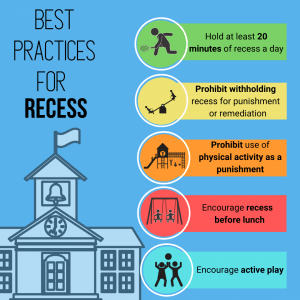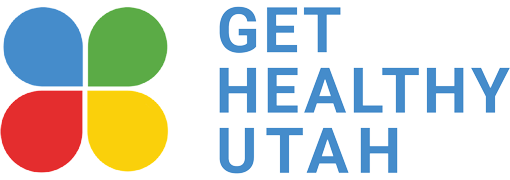The Utah State Board of Education has provided Best Practice for Recess Guidelines. While not mandated, the guidelines support the Utah State Board of Education’s Strategic Plan Safe and Healthy Schools Goal that every student can learn in a safe and healthy school environment.
Why Recess Matters
Physical Activity and Obesity
The CDC recommends that children get at least 60 minutes of physical activity a day. However, in Utah, only 14% of children meet this recommendation. Lack of physical activity can contribute to an unhealthy weight and lead to further health problems. Recess can provide an opportunity for physical activity at school, where students spend a large part of their day. Recess provides the opportunity to take a break from focused classroom work and allows students come back refreshed and ready to learn.
Physical Activity and Academic Achievement
Recess helps get blood moving and improves brain function. Research shows that after 20 minutes of physical activity, students test better in reading, spelling, and math. Recess helps children focus better and reduces classroom misbehavior.
Physical Activity and Social/Emotional Health
Recess allows children to develop fundamental, lifelong personal skills to help them better thrive in and out of the classroom. Students are better able to problem solve, negotiate, and develop communication skills.
Recess Guidelines
In Utah, 65% of all schools withhold recess for punishment or remediation. However, among Title 1 schools, that number increases to 72%. The Best Practices for Recess Guidelines can help schools ensure that all their students have an opportunity to participate in recess, which can help them better succeed in school. The guidelines provide a model policy, alternatives to withholding, strategies for indoor recess, and other best practices to ensure that recess can be successful.
Recess Model Policy

Learn more about how you can implement Recess before Lunch.
Do you have a recess success story? We’d love to hear it!
Contact

